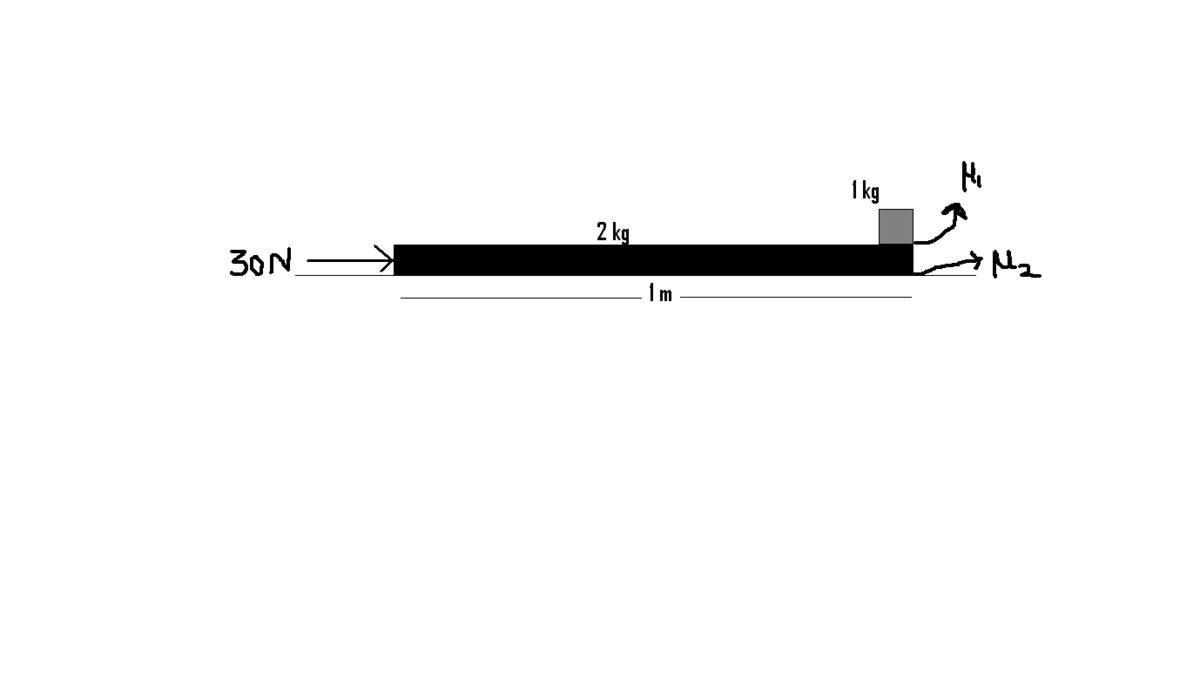Balancing forces application
A plank of mass and length is placed on a horizontal floor. A small block of mass is placed on top of the plank, at its right extreme end. The coefficient of friction between plank and floor is and that between plank and block is . If a horizontal force starts acting on the plank to the right, the time after which the block will fall off the plank is
Take
The answer is 0.667.
This section requires Javascript.
You are seeing this because something didn't load right. We suggest you, (a) try
refreshing the page, (b) enabling javascript if it is disabled on your browser and,
finally, (c)
loading the
non-javascript version of this page
. We're sorry about the hassle.
The force of friction between the floor and the plank * f 1 = μ 2 × ( m 1 + m 2 ) × g = 0 . 5 × 3 × 1 0 = 1 5 N * Now, friction between the plank and the block f 1 = μ 1 × m 2 × g = 0 . 2 × 1 × 1 0 = 2 N let's first consider the plank the forces f 1 a n d f 2 act on it toward left and * 30 N towards right. so the net force on it is 3 0 − f 1 − f 2 = 3 0 − 1 5 − 2 = 1 3 N * so the acceleration of the plank is * F/M = 6 . 5 m / s 2 . * The only force on the small block is f_{2} = 2 N. Therefore it's acceleration is * F/M = 2 m / s 2 . * the relative acceleration of the *2 * blocks is
* 6 . 5 − 2 = 4 . 5 m / s 2 . * now you can use equations of motion to get the time!!!